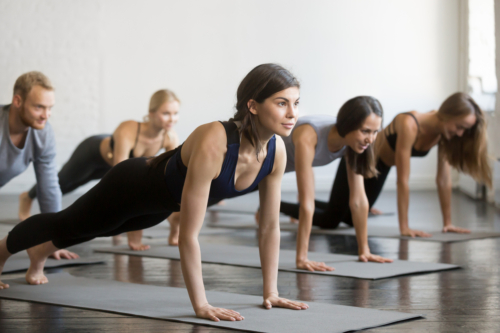Article by the Drummond Team

Before you glance at the title and think ‘how original, another core training article?!’, take a second and think of what you consider “core stability training” involves.
Typically, the aim of a core stability program is to strengthen the muscles that stabilise your lower back. Transversus Abdominis, Rectus Abdominis, Multifidus and the Erector Spinae are just some of the muscles that are commonly thrown into the work-out. Crunches, Sit-ups, and the dreaded ‘plank’ are usually quite high up the list of core exercises.
Most people will then repeat this program over and over until they are utterly bored, or find themselves doing the plank in their sleep!
The first stumbling block we tend to identify is that a major contributor of lower back stability is missed out altogether.
Its attachments directly onto the vertebrae of the Lumbar spine give Psoas Major a significant role in stabilising the lower back, even though it also helps in flexing the hip. However, it is rarely included in any core stability strength program.
The second consideration of core stability training is that the lower back sits on top of the pelvis and hips. If the pelvis and hips are unstable, the lower back will never be as strong as it potentially could be.
The spine, slots into the pelvis via the sacro-iliac joints. Appropriate movement and stability in these joints are vital to our ability to run, jump, squat and change direction efficiently without pain. Many core stability training regimes do not include any specific strength work for the Glutes. This muscle group in particular plays an extremely important role in stability during weight-bearing.
Due to its attachments, when Gluteus Maximus contracts it helps to force the Sacro-iliac joint closed, increasing stability of the pelvis during loading. Gluteus Medius provides added support to the structure by stopping the pelvis from tilting sideways when standing on one leg.
Another point we should consider when embarking on a core stability program is that the abdominals rarely work in a perfect linear pattern during sport and exercise. Think of the actions involved in a sit-up or holding a plank position, are these actually ever replicated in our activity? Most sports include some level of rotation or side-bending through the torso, at the same time as flexing or extending, so we must train them this way.
A well designed strength program can be hugely beneficial in preparing and conditioning our bodies for the sports we enjoy. However, the benefits can be limited significantly if we do not make our strength program specific to our sports.
There are situations where training the local stabilising muscles of the back need to be trained in isolation, but once a good level of local control is achieved, we have to make the progression to exercises that imitate our sporting needs.
This is where we should welcome Psoas, the Glutes and the Adductors into our “core” training.
Are you interested in becoming a Pilates Course Instructor? Have a look at our courses here!
